#phytolacca
Text
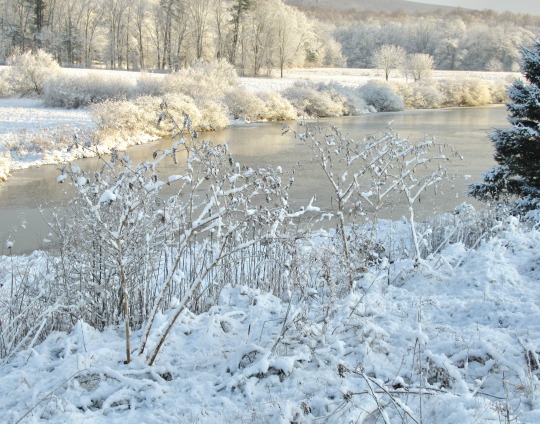
Pokeweed in the snow.
This one is a holiday card to all the Phytolacca fans. I know you're out there!
428 notes
·
View notes
Text


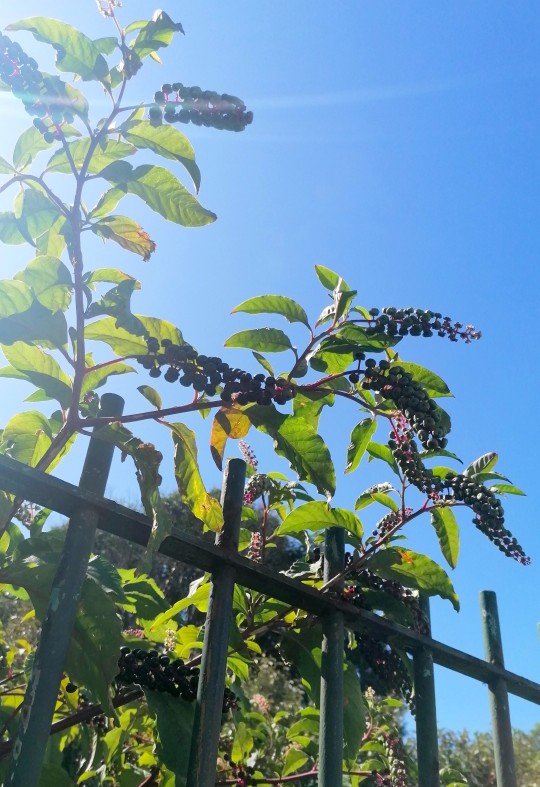


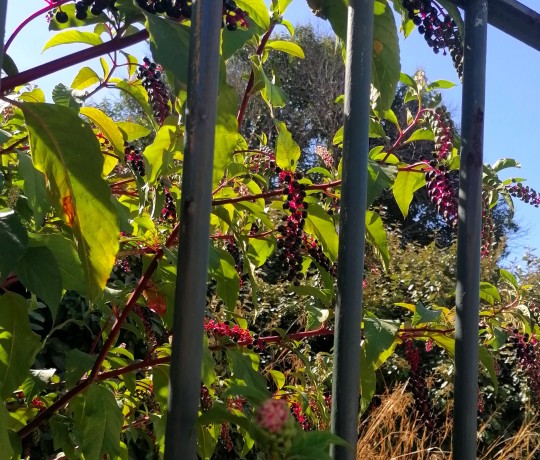
Marseille. Le quartier de la Pointe Rouge.
La plante est un Phytolacca.
#marseille#pointe rouge#port#port de la pointe rouge#plage#pllage de la pinte rouge#phytolacca#botanique
3 notes
·
View notes
Photo

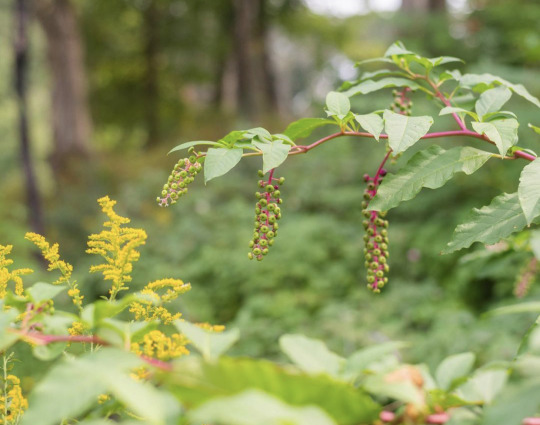

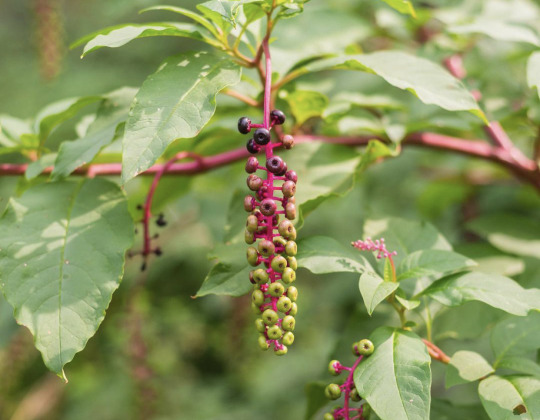

Field journal 📔 ID: Phytolacca americana Common name: American pokeweed (other cool names include dragonberries and inkberry) 🫐 This is a beautiful native plant in eastern North America, the Midwest, the Gulf Coast, and the West Coast of the US. 🫐 While pokeweed can be toxic to humans and many other mammals, it’s a great food source for many other critters such as songbirds, raccoons, opossums, foxes, mice, and moths. 🫐 However, some parts of pokeweed have been consumed by humans for food and medicine. In fact, there’s a song called “Polk Salad Annie” about the “poke sallet” or “polk salad” made from leaves and stems of the young plant that have been carefully boiled and rinsed 2+ times. You can find YouTube videos of Elvis performing this song! 🫐 This plant has contributed to a few other interesting uses by humans. The berries and roots can be made into inks and dyes, and parts of it have also been billed as treatment for skin diseases, rheumatism, mumps, and arthritis. In the 1890s, extract from the plant was advertised as a weight loss drug. 🫐 Chemicals from it are being studied for antiviral effects against diseases like HIV and as a possible way to control zebra mussels—interestingly enough, my first sighting of this plant last summer was at the lake where I spent my childhood summers avoiding being cut by the nonnative zebra mussels that invaded the area lakes. 🫐 Observed in Steuben County, Indiana 🫐 🌿 🔍 #indiana #plant #pokeweed #midwest #Phytolaccaamericana #berries #nature #naturelovers #nature_brilliance #fiftyshades_of_nature #phytolacca #inkberry #dragonberries #goldenrod #americanpokeweed #Phytolaccaceae #Caryophyllales #wildflowers #indianaphenology (at Steuben County, Indiana) https://www.instagram.com/p/CivU6v6uYGM/?igshid=NGJjMDIxMWI=
#indiana#plant#pokeweed#midwest#phytolaccaamericana#berries#nature#naturelovers#nature_brilliance#fiftyshades_of_nature#phytolacca#inkberry#dragonberries#goldenrod#americanpokeweed#phytolaccaceae#caryophyllales#wildflowers#indianaphenology
2 notes
·
View notes
Text
youtube
Pokeberry, aka pokeweed, inkberry, poke salad, and more, Phytolacca americana is a luminous natural dye which can achieve incredible shades of fuchsia and magenta for ecofashion and ecoprinting. While this dye will fade in sunlight (i.e., moderate to low light fastness), it is great for indoor projects and will last for years out of direct sun. This plant is native to large areas of central, east and southern North America but has naturalized in areas of Europe and Asia where it can be invasive. While the fresh shoots and other components have historically been used as traditional medicines and as food sources, pokeberries are poisonous and processing requires some additional safety steps.
Come discovery the amazing shades you can achieve with pokeberries - from bright deep pinks through to reds and oranges, it's a dynamic dyer which responses in unusual ways to temperatures. Colours from natural dyes is a great way to contribute to sustainability and responsible environmental choices.
Chapters:
0:00 Introduction
2:22 Processing
4:26 Day 1 (Dye Processing)
7:38 Day 2 Pink (No Heat)
9:35 Orange (Boiling)
11:08 Pink-Red: 60C/140F
12:03 Berry Storage (Dehydator)
Patreon:
/ wildcraftdyeing
Don't forget to lichen subscribe to my channel for more videos on how to forage and naturally dye:
/ @wildcraftdyeing
Yarn for this video was donated in part by Urban Yarns (urbanyarns.com). Much appreciated!
For more in-depth discussion on mordanting, check out my video on dyeing with acorns:
• How to Naturally Dye w...
New to dyeing? Start with this playlist:
• New to Dyeing? Start h...
#Wildcraft Dyeing#solarpunk#how to#how to dye#dye#natural dye#diy#do it yourself#Pokeberry#pokeweed#inkberry#poke salad#Phytolacca americana#yarn#Youtube
4 notes
·
View notes
Photo
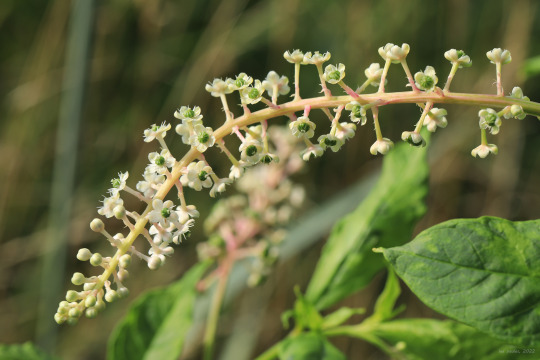
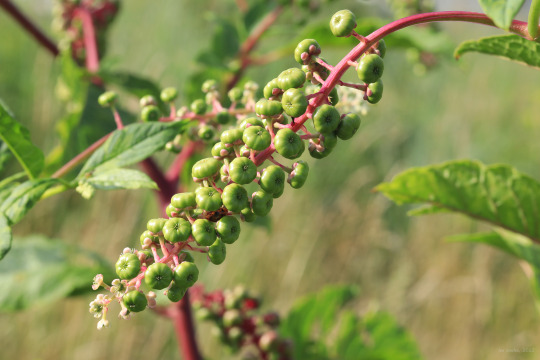

For those who’ve grown up in Appalachia, this gangly, bushy perennial herb with bright red stems, broad, crinkled leaves, and iridescent purple-blue berries needs no introduction. The young leaves and shoots of American pokeweed (Phytolacca americana) have historically been harvested by mountain folk in the spring and sauteed with bacon grease to make poke sallet. But the leaves and shoots must be properly cleaned and rinsed to remove their toxins. As pokeweed grows, it becomes increasingly more toxic - ingesting any part of the mature plant can cause respiratory failure and death in humans and livestock. The flowers and berries, which start out green and gradually turn purple-blue by late summer, have some wildlife value, but many people in the east consider the plant to be weedy. However, as it occasionally turns out, one person’s weed is another person’s ornamental - pokeweed has reportedly become a popular garden plant in Europe.
#appalachia#vandalia#west virginia#summer#berries#flora#phytolacca americana#american pokeweed#pokeweed#poke#poke sallet#eat at your own risk#culture#food that can kill you
47 notes
·
View notes
Text
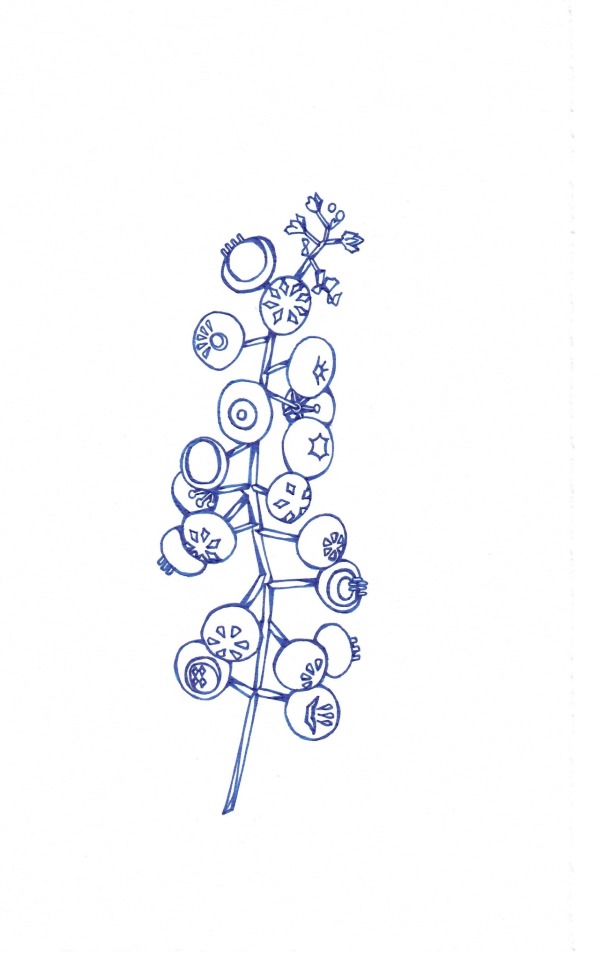

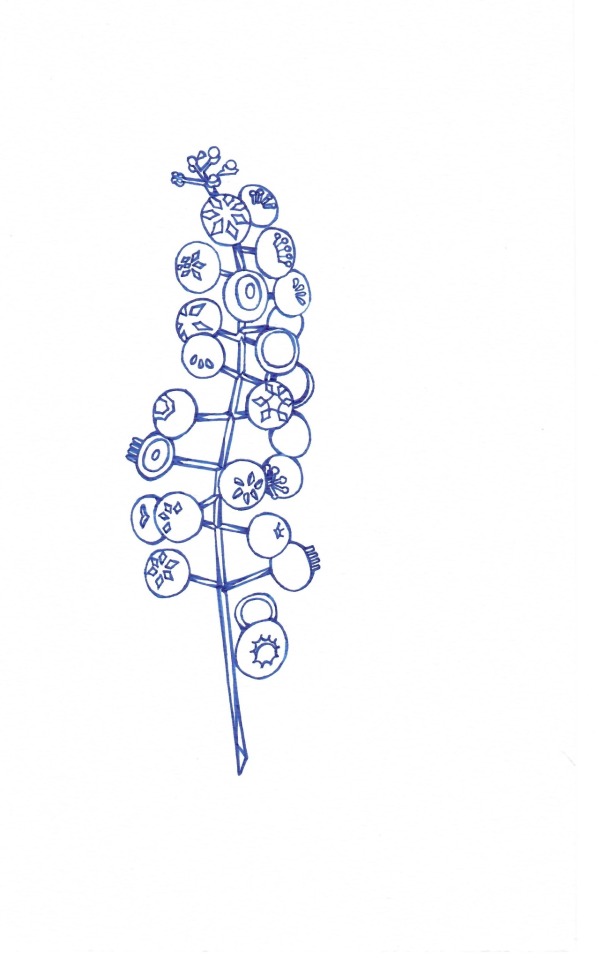


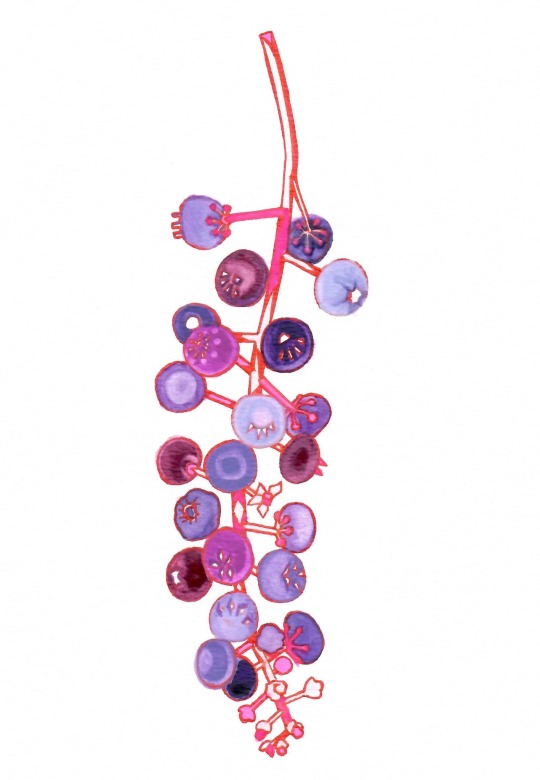
#illustration#drawing#art#illustrated#gouache painting#sketchbook#gouache#botanical illustration#witchycore#appalachia#phytolacca americana#pokeweed#draweveryday#tumblr draw
13 notes
·
View notes
Photo

American Pokeweed by Marcus Pink on Flickr.
This work is licensed under CC BY 2.0.
#american pokeweed#phytolacca americana#cultivated#landscape#fruit#creativecommonsplants#creative commons#curators on tumblr#botany#plants#plant blog#plant photography#flickr#green#red
7 notes
·
View notes
Photo
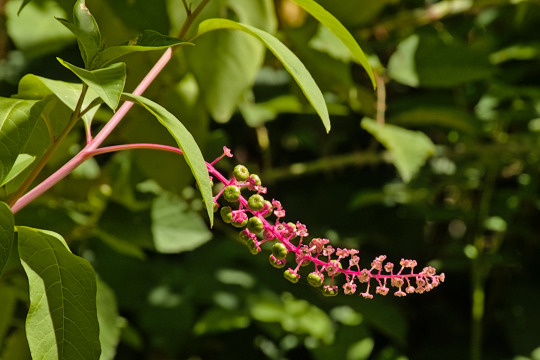
Pokeweed forming berries
#pokeweed#flowers#wildflowers#photography#nature#a game of tones#Phytolacca americana#berries#inkaberries#botany#original photography#original photographers#photographers on tumblr#lensblr#pws
18 notes
·
View notes
Text
this is a sharing post about herbal use
-- not going into politics /ideology/ pharma
-- not for diagnoses, use this information with aid of your health care provider or your own risk
from folk medicine now making its way into alternative health: phytolacca oil (topical; not to be used internally)
my personal current use is for breaking up cancer cells in breast tissue, under guidance of my licensed TCM health care provider i have been using this medicinal phytolacca oil topically for approximately 4 weeks.
my personal experience: it has reduced swelling/ growth of a cancer tumour that had broken through; this has given skin the ability with another mixed herb salve (predominately comfrey) to heal as the tumour continues to decrease; medicinal oil use has been twice to thrice daily, massaging oil into breast tissue (but not in open wound) of both breast and upper body lymph (pits and neck). excess oil was rubbed into hands and on suspected skin cancer areas. besides reduction of pronounced breast tumour, the upper chest area has soften ‘anvil plate’; two of four skin cancer patches have died and fallen off like old scabs after being there for min of four years and expanding growth; there is a noticeable reduction/ change in skin tabs in areas where oil is applied ; another possible positive note is sharp pain in hands due to what some doctors have thought was arthritis/ carpel tunnel/ lyme or it’s co-infection (i have the 3 “B”s) nerve issues have/are also diminishing with use or massaging this oil into hands and wrist.
i am very much encouraged and want to share this personal information with you bc you aren’t going to get it from your western trained doctors and i was disappointed that i did not get it from my naturopath either! i am not diagnosing nor prompting people run right out and get poke oil to use but i am encouraging you to investigate and speak with your care provider if you are interested in this for personal use. if they will not discuss it then i would encourage you to find an herbalist or other train professional that can help you become more knowledgeable about herbal poke use
#health#herbs#herbal medicine#poke#poke weed#natural medicine#plant medicine#tcm#naturopath#western medicine#cancer#tumours#skin growth#cell growth#sharing information#phytolacca oil
20 notes
·
View notes
Text
Phytolacca americana
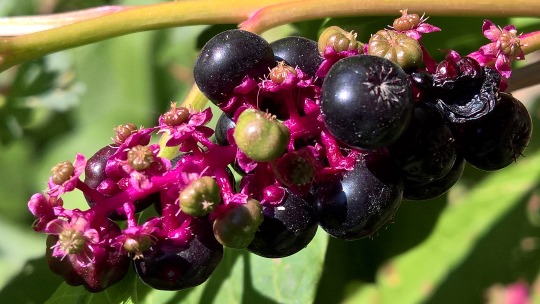
3 notes
·
View notes
Text

First time picking ripe berries off these two - Pokeweed and European Black Nightshade. I’m so excited to experiment with ink and dye! These are just a few berries crushed in water. My first goal is saving some seeds because these are so beautiful I want MORE of them in my life.
3 notes
·
View notes
Photo




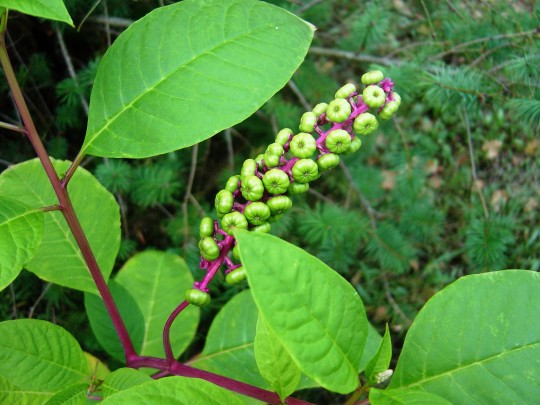





Je reprends mon projet de présenter la plupart de mes 52461 photos (oui, ça a encore augmenté !).
2005. Fin d’été et retour dans le Nord, à Douai !
- les 3 premières : chez Jean-Luc. Son balcon au dessus de la Scarpe était superbe !
- chez moi, où j’ai la surprise, à mon retour de vacances, de surprendre deux de mes nounours en fâcheuse position (of course , Nours est dans le coup !)
- dans les environs : un phytolacca aux étranges couleurs !
- les 2 suivantes, Douai toujours, au Parc Bertin
- le long du canal
- les 2 dernières : sortie scolaire à Escaudain.
#souvenirs#nord#douai#scarpe#balcon#nours#jean-luc#moustache#sapho#bouledogue français#parc bertin#nounours#ours#phytolacca#couleur#escaudain#marécage#toile d'araignée#canal#reflet#nuage
2 notes
·
View notes
Text
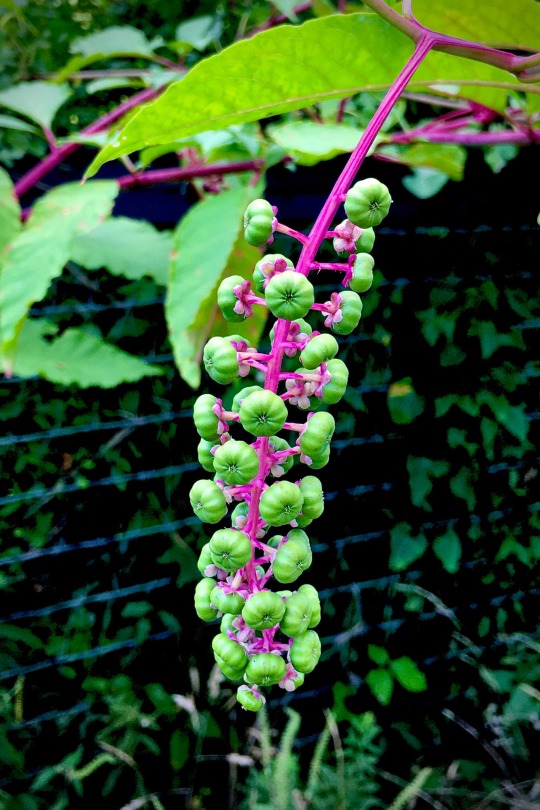
End of summer
Phytolacca americana
4 notes
·
View notes
Text
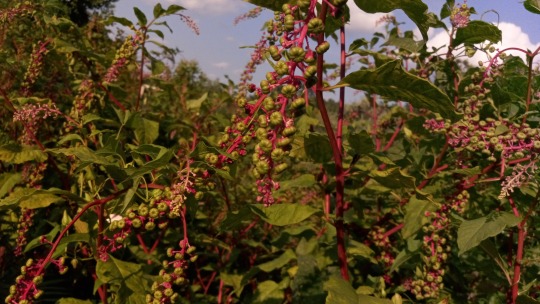


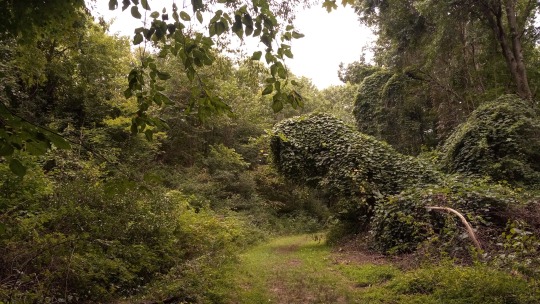
2023
#photography#photo#pokeberry#milkweed#queen anne's lace#phytolacca americana#asclepias syriaca#daucus carota#original#personal#own
0 notes
Text

Phytolacca americana.
The American Poke-weed is a startling herbaceous plant with black fruits and bright pink stems. It grows easily from seed and spreads readily. Unfortunately it is also rather poisonous and not the sort of plant you would want to brush through while out walking naked.
0 notes
